Doubanjiang (Spicy Chili Bean Paste)
This post may contain affiliate links. Please read the disclosure policy.
Doubanjiang is a spicy chili bean paste from Sichuan province in China. It’s a key ingredient in popular Szechuan dishes such as kung pao chicken and mapo tofu. Learn about the different varieties, brands, ways to use it, substitutes and more!
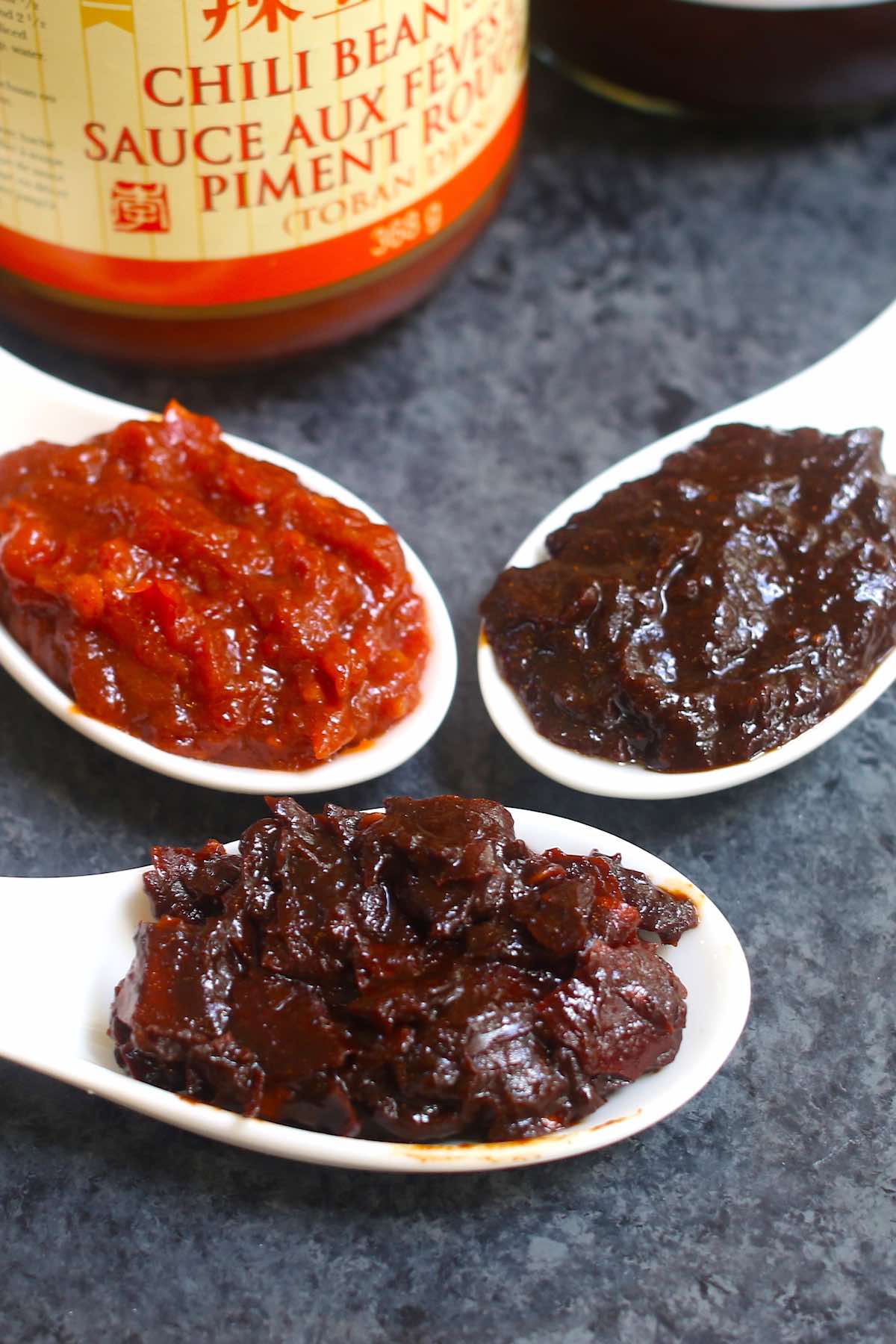
Ever walk in the condiment aisle of an Asian supermarket? There are literally hundreds of different sauces to choose from! While you don’t need many of them, dou-ban-jiang is an exception. It’s an essential ingredient with unique umami flavors characteristic of Szechuan cuisine and even many non-Szechaun dishes. Today we’re covering everything you need to know about this spicy bean sauce!
What is Doubanjiang?
Doubanjiang is a spicy chili bean paste that goes by many names including tobanjiang (or 豆瓣酱 in Chinese), do bujang, to ban jang, broad bean paste, spicy bean sauce, douban sauce and so on. Key ingredients include fermented broad beans, soybeans, chilis, rice, salt and seasonings. It has a deep and complex umami profile that brings unique flavor and complexity to dishes.
Dou-ban-jiang is the soul of Szechuan cuisine and used in dishes like Mapo Tofu, Hunan Chicken, Kung Pao Beef, Twice Cooked Pork and Dan Dan Noodles. The spicy version is the most common, but recipes sometimes call for the non-spicy version as well.
What does it taste like?
Doubanjiang has rich, umami flavors that create a tangy and salty sensation in the mouth. The spicy version has an earthy and fiery taste, while the non-spicy version has a touch of sweetness.
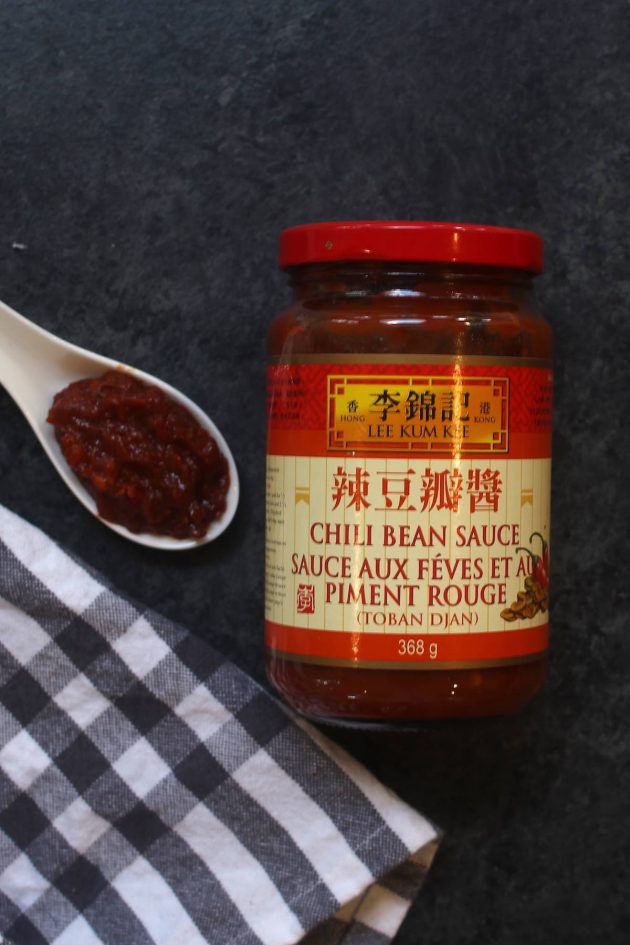
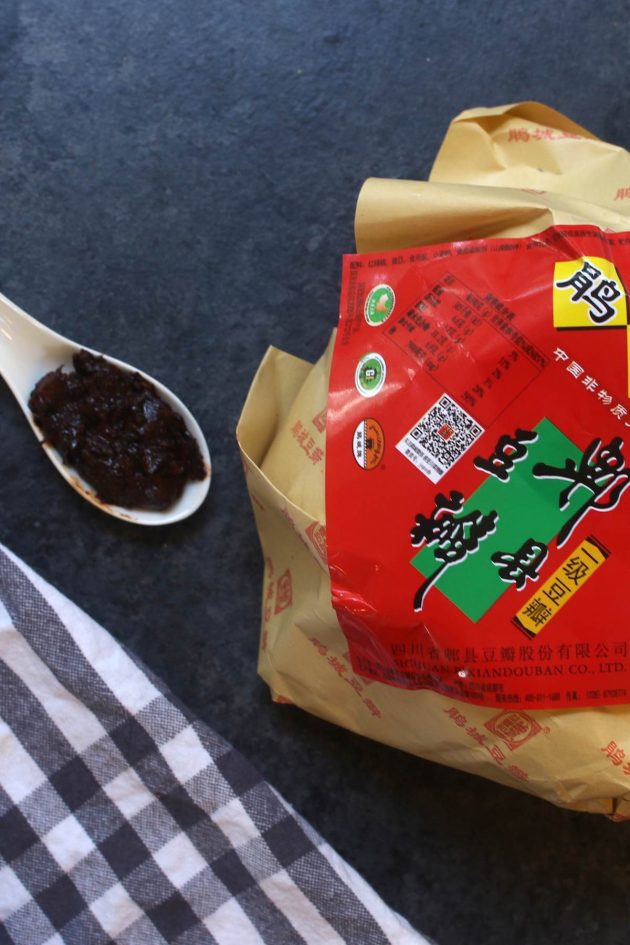
Spicy Doubanjiang
The spicy version has various names chili bean paste, chili bean sauce and La Doubanjiang (辣豆瓣酱) in Chinese. It’s a combination of fermented bean paste and red chili peppers, with storebought varieties having either a red or dark brown color.
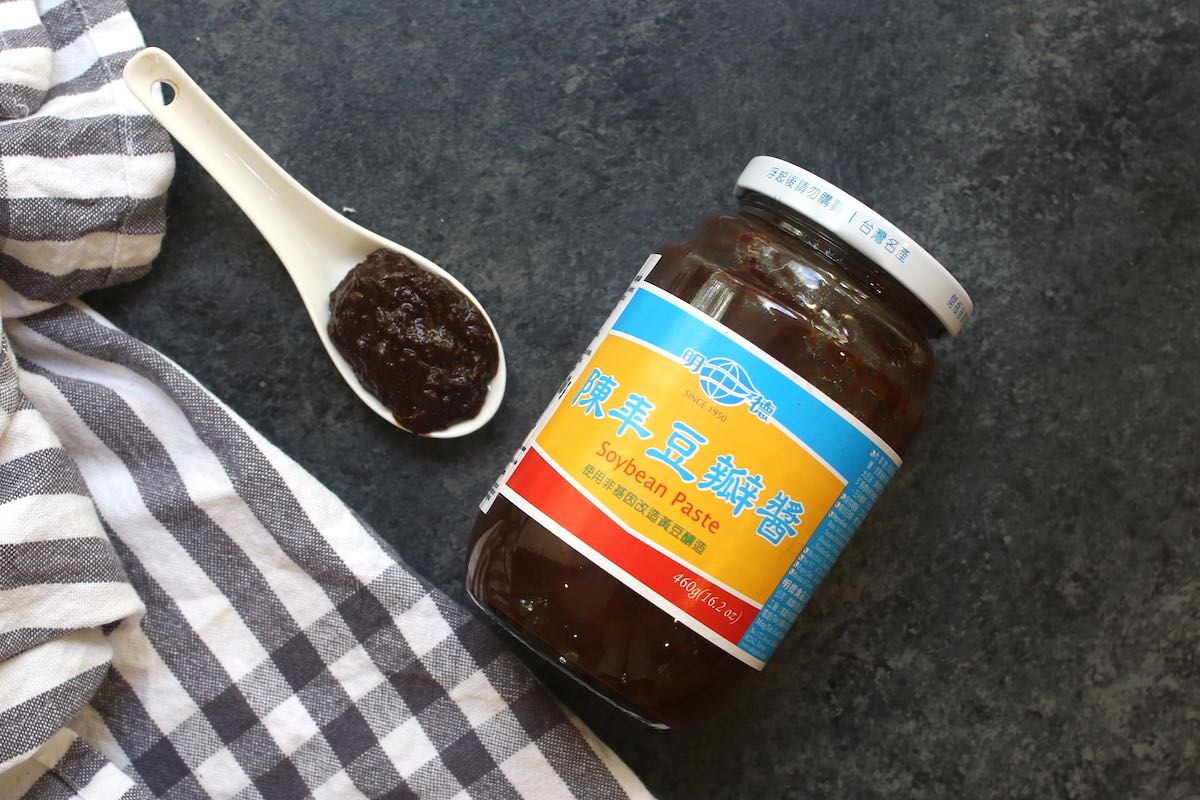
Non-spicy Doubanjiang
The non-spicy version is sometimes called fermented black bean paste or 豆瓣酱 in Chinese. It has a dark, near-black color without any signs of red chili. It can be confusing when shopping, so check the color and/or ask the staff. Also, if you see the Chinese character “辣” on the label, it means spicy!
What is Doubanjiang Sauce Made Of?
Broad beans and soybeans lead the ingredient list and contribute to the unique taste of the sauce. Different brands use slightly different ingredients, and here are the most common ones:
- Dried broad beans
- Soybeans
- Salt
- Fermented sticky rice
- Alcohol
- Oil
- Ginger
- Spices such as red chili peppers, anise, bay leaves, Szechuan peppercorn, etc.
Major Brands
When shopping, look for a brand with high-quality ingredients, a rich, dark color and slightly gritty texture. Some brands include MSG, which is not necessary, and some may taste too salty for your liking.
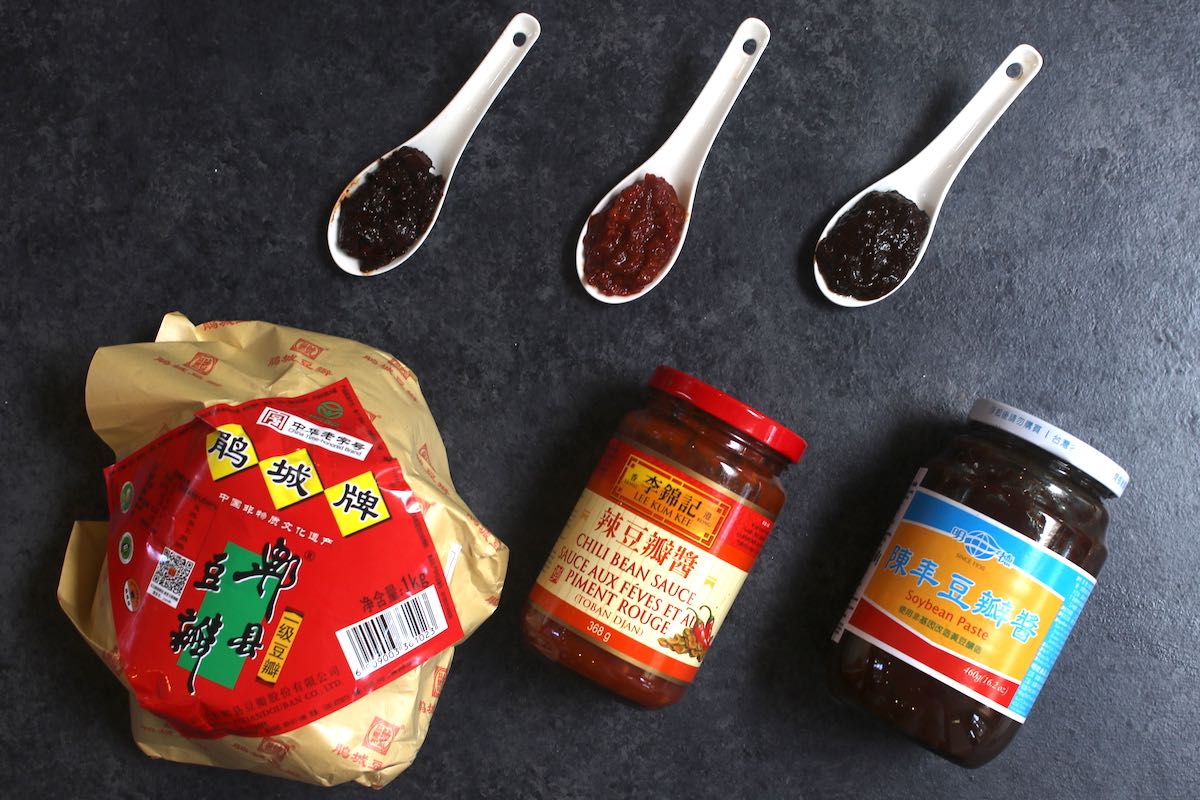
- Pixian Doubanjiang: An authentic product originating in the Pidu district of Sichaun’s capital city of Chengdu. The recipe specifies erlingtiao chilis from the region, broad beans and fermentation steps. It’s readily available online and in Asian supermarkets, priced at a premium. (If you see “pixian doubanjiang” in plastic packaging at a low price, it’s most likely fake!)
- Lee Kum Kee: Labelled tobanjan, this mass-market brand is easy to find thanks to its bright red color, although the flavor is not so authentic.
- Yuki Doubanjiang: You may encounter this popular Japanese brand, which has excellent spicy flavors.
Try a few products and pick your favorite…
Doubanjiang has a long shelf life thanks to its high salt content. It should last at least one year when refrigerated, so follow the best-before date on the package. The oil may separate from the paste so you may need to give it a stir before use.
Doubanjiang Substitutes
When you can’t find the real thing, you may need to improvise. Here are two options:
- Sambal Oelek: This Thai chili sauce adds heat but lacks the fermentation to create the complex umami flavors.
- Gochujiang: This is a Korean chili paste that is sweeter and milder tasting. You can add red pepper flakes to increase the heat for a closer approximation.
For a homemade substitute, see the recipe below.
How to Use Doubanjiang
There are many ways this condiment can add flavor and heat as follows:
- Stir fries: Add a spoonful to hot oil in a skillet or wok along with garlic or ginger. This seasons the oil before you add the rest of the stir fry ingredients.
- Soups: A spoonful works wonders to add a fiery kick to Asian soups with noodles or wontons.
- Marinades: Mix a spoonful into a marinade for meat, poultry or seafood.
- Dipping sauces: Try adding some to dipping sauces for dumplings, spring rolls and noodles.
Note you should avoid consuming doubanjang directly and instead incorporate it into other ingredients.
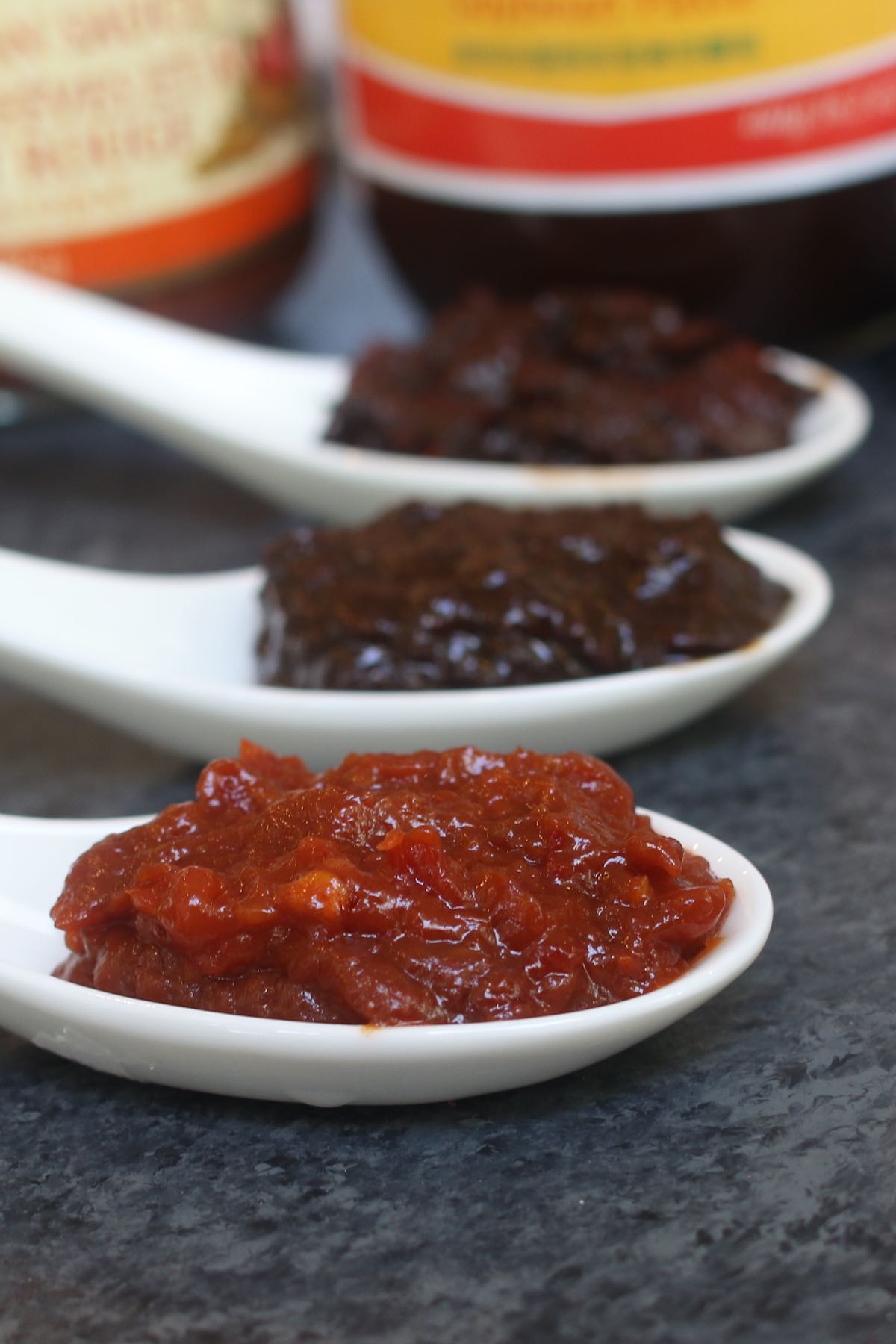
Doubanjiang Substitute
Ingredients
- 3 tablespoons black bean paste, or soybean paste or oyster sauce
- 1 1/2 teaspoons red pepper flakes
- 1/4 teaspoon salt, or to taste
Instructions
- In a small bowl, mix the bean paste with 1/2 teaspoon red pepper flakes.
- Taste a small amount of the mixture. Mix in more red pepper flakes to reach your desired spiciness. Then add salt to reach your desired saltiness.
- Use as directed in recipes, or store in an airtight jar in the refrigerator for up to 1 month.
Please read our nutrition disclaimer.
© TIPBUZZ. Images and text on this website are copyright protected. Please do not post or republish without permission. If you want to republish this recipe, please link back to this post. This post may contain affiliate links. Read the disclosure policy here.
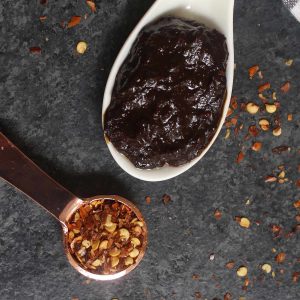
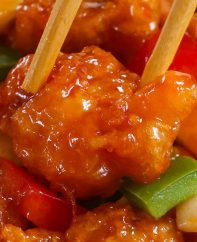


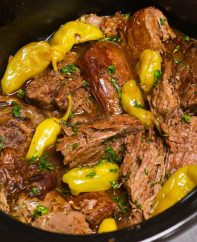
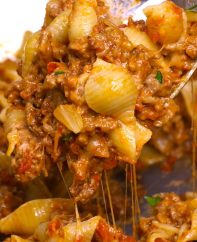
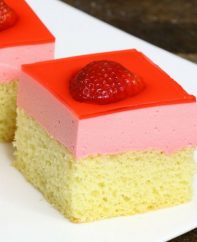

Real Sichuan doubanjiang never includes soy beans, only cheap copies do.
Hi Ken, Correct – the broad beans used in doubanjiang are like fave beans. Soybeans are used in inferior varieties. Thanks for your comment!
Sambal oelek is indonesian, not thai
Hi Ørnar, Thanks for your comment. Agreed that sambal oelek is indeed Indonesian. Thai flavors are different!
Hi! Do you have any recommendations for non-spicy doubanjiang? Or pictures of the bottles at least? All the Asian grocery stores I’ve checked (I live in an area with several options) seem to only carry the spicy version.
Hi Amy, Thanks for your question. Doubanjiang is by definition spicy, so you won’t find a non-spicy version in stores. The only option is to make your own and reduce the amount of chilis accordingly. Hope that helps!
If im substituting with gochujang, is the ratio going to be 1:1?
Hi Angel, Thanks for your question. The ratio is generally 1:1, but with variation between products you may need to adjust to suit your taste. Good luck!
I don’t think sambal oelek is Thai though.
Hi Daulah, Thanks for your comment. You’re correct – it’s actually of Indonesian origin. Close to Thailand, but not the same!
I’ll bet this really packs a huge punch of flavor. I don’t cook a lot of Chinese food at home, but I do love it. I’m excited to try this!